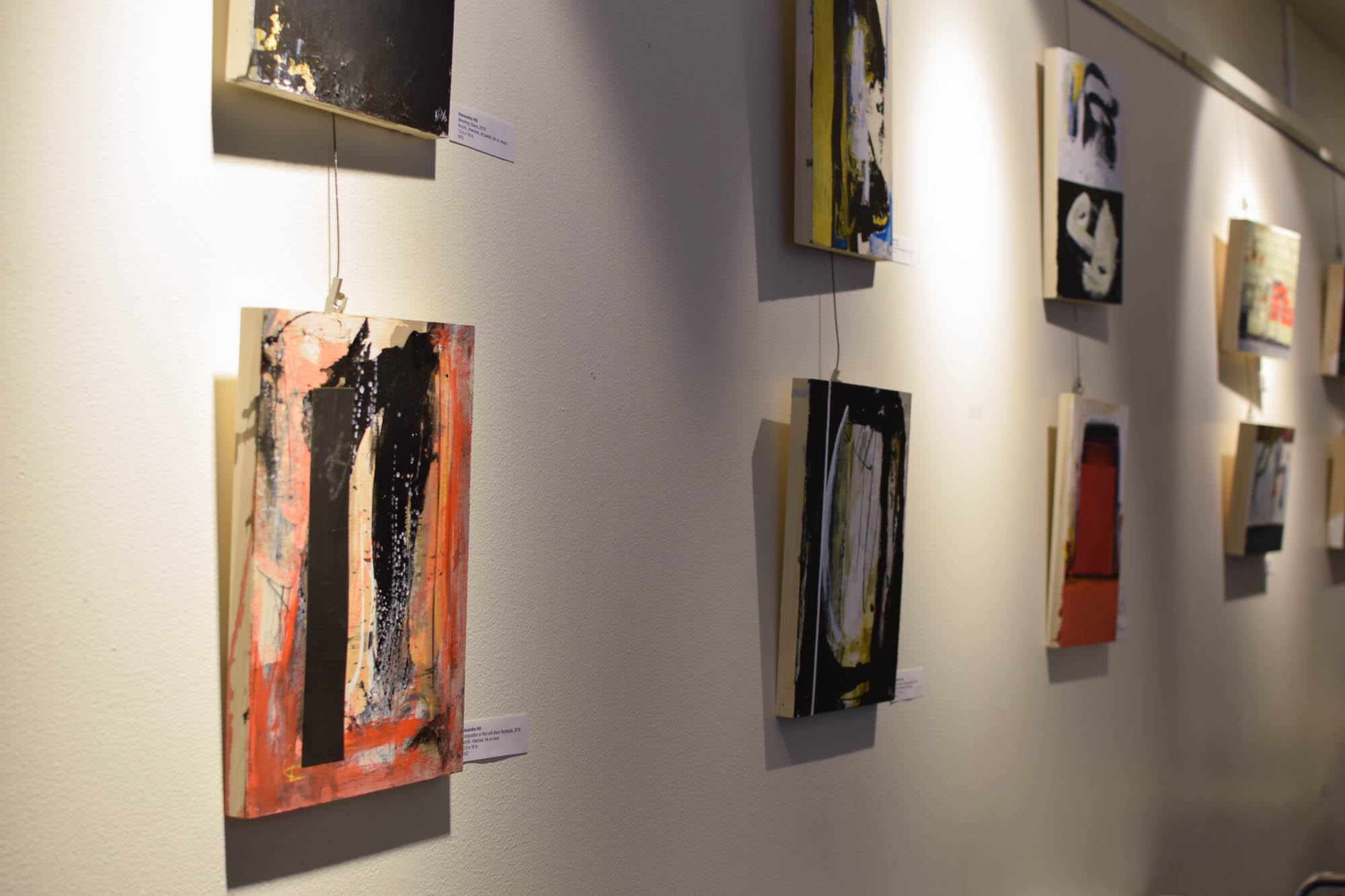Abstraction in conversation with artist Alex Hill
Working without a concept, yet finding influence from emotions and periods of time in history, Alex Hill’s work is not only striking and beautiful, but it also encourages a further interrogation of what is represented within the paint strokes. Influences of history, intuition, and emotion are translated into visuality through Hill’s vibrant, expressive, abstract paintings.
Almost exclusively through acrylics on wooden panels, Hill follows her intuition as she creates paintings that incorporate an interesting mixture of fluid and fixed structures and movements upon the canvas.
I think my paintings are probably fairly accurate windows into my psyche at the moment that I’m painting them—aggressive, or serene, or methodical, etc. But beyond that I don’t work with much of a concept or theme in mind,” said Hill.
“These works are generally abstracts that juxtapose organic forms and ‘automatic,’ gestural marks with rigid and uniform geometry. This use of juxtaposition loosely explores how the contradictory relationship between these forms mirrors the relationship between the man-made and the natural world, but like I said, I’m not usually consciously thinking about themes or ideas like this while I’m painting.”
Originally from Victoria, B.C., Hill completed her undergraduate degree at University of Victoria (UVic) in Slavic studies and Soviet history, before moving to Montreal in September 2017. Her creative practice was a part of this move, as Hill explains, “After graduating, I moved to Montreal to focus on painting, and because it’s really a ‘right of passage’ for Victoria kids to move out here.” Currently, Hill isn’t in school, but a future enrolment as an independent student at Concordia is in the cards, especially since, as Hill explains, “I already spend four days a week on campus, working at The Hive!”
Hill was an avid painter throughout high school, even considering pursuing art in university, but ultimately found her path in studying history, which lessened her time and focus in practicing painting. However, completing her undergraduate degree changed this, and painting became prominent once again. “When I graduated from UVic in 2016, I was hit with anxiety that came along with no longer being a student for the first time in my life and being unsure of my direction and identity from thereon out. Getting back into painting at this somewhat turbulent time was extremely cathartic and exciting.”
These previous studies, along with the influence of baby-boomer parents, find presence in Hill’s artwork. She explained the influence from these two major sources has led to Hill always feeling drawn to mid-century styles and movements, whether it be art, fashion or music. “My paintings are definitely inspired by the works of many of the abstract expressionists. From a very early age I was drawn to abstraction by its emotional and intuitive nature. I particularly love the vibrancy, colours and general sensibility of painters like Joan Mitchell, Franz Kline and Willem de Kooning.” she said.
Being in Montreal has influenced Hill and her art practice to a degree as well. “Since moving to Montreal, I’ve been able to devote considerably more time and energy to my art as well as having the opportunity to get more engaged within an artistic community—including meeting many artists at Concordia—and visiting local galleries,” Hill said.
I really feel that the connectivity throughout the artistic communities in Montreal has helped me to feel like I’m no longer working in a little bubble. I love knowing what other painters in my demographic are up to.”
Community connection through art plays a part in Hill’s practice, as her move to Montreal has displayed. Yet, ideas of academia in connection to the abstract genre are less important to Hill, and are something she challenges within her work. “Although abstract art can get intellectualized and wrapped up in layers of theory I don’t think it is an inherently elitist and intellectual art form. I don’t think you should need a university degree to appreciate and enjoy beautiful colours or emotional intensity or satisfying balance and composition. These things are pretty universal and definitely what I aim for in my paintings.”
As for future works and projects, Hill is looking forward to seeing how things turn out, while continuing on her current path and art practices. “My work is still very much just in the experimental stages and every time I sit down to paint, the outcome is very different from what I could have expected, so I really can’t predict what direction it’ll take,” she explained. “I would like to eventually return to doing some more semi-representational work but who knows.”
Hill’s work is currently showing in The Hive Solidarity Co-op in the Hall building until April 10, along with work by artists Maya Bergeron and Nora de Mariaffi. A selection of her works are available for purchase. You can view more of her work on Instagram: @alexhill_painting.
